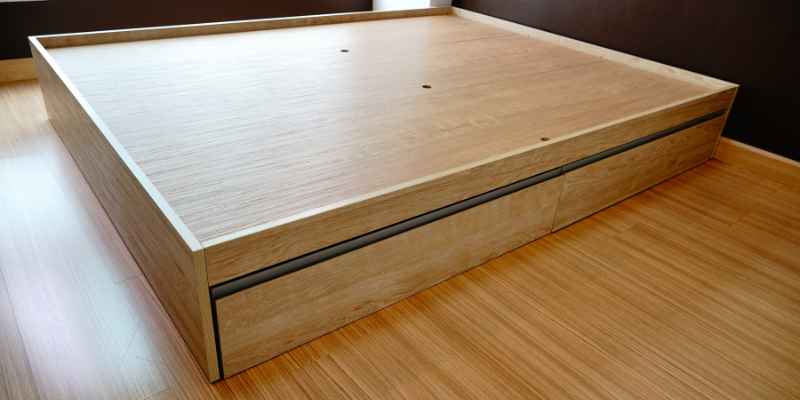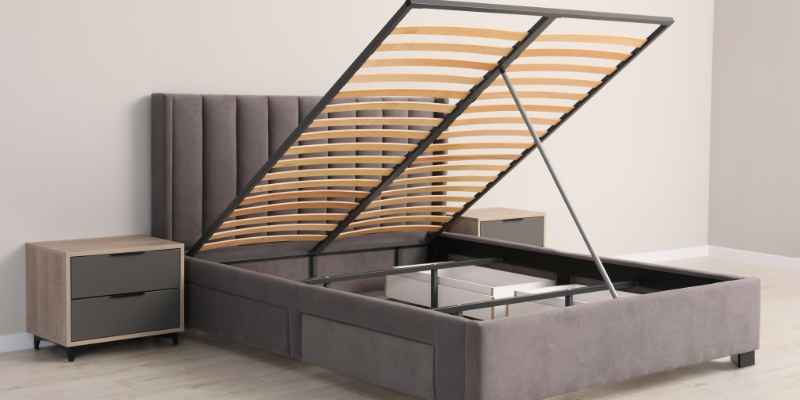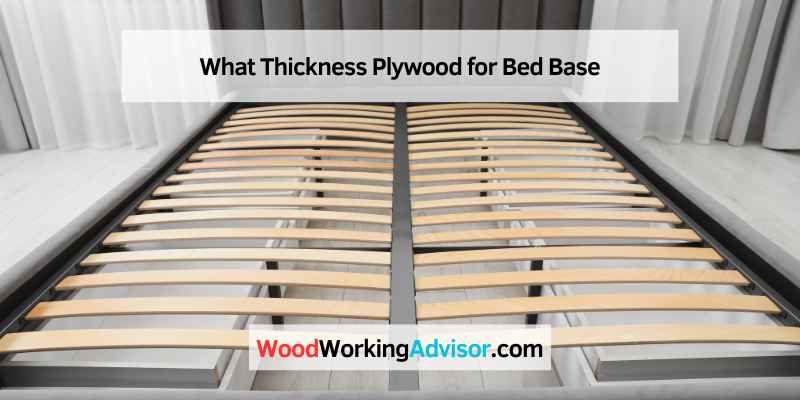When choosing plywood for your bed base, thickness is an important consideration. The thicker the plywood, the more sturdy and durable it will be. However, thicker plywood can also be more expensive.
So how do you know how thick of plywood to choose? Here are a few factors to keep in mind when deciding on the thickness of plywood for your bed base:
1. The weight of your mattress – If you have a heavier mattress, you’ll need a thicker piece of plywood to support it.
Otherwise, a thinner sheet will suffice.
2. The size of your bed frame – A larger bed frame will require a thicker piece of plywood to provide adequate support. Conversely, a more petite frame can get by with a thinner sheet.
3. Your budget – As mentioned above, thicker plywood is typically more expensive than its thinner counterpart. If cost is a factor, opt for the most delicate sheet that will still meet your other criteria (weight and size).
When choosing plywood for your bed base, thickness is essential. The thicker the plywood, the more sturdy and durable it will be. However, it would be best to consider the plywood’s weight when deciding.
Thicker plywood is usually heavier, so if you are planning on moving your bed around often, thinner plywood may be a better option. Ultimately, it is up to you to decide what thickness of plywood will work best for your needs.

Plywood Thickness for Van Bed
Choosing the right plywood thickness is one of the most critical considerations when outfitting your van for comfortable sleeping. Too thin and you’ll feel every bump in the road; too thick and you’ll sacrifice precious storage space. So what’s the perfect consistency for a van bed?
The short answer is that it depends on a few factors, including the type of van you have and how you plan to use it. In general, though, we recommend 3/4″ plywood for most van beds. This thickness strikes a good balance between comfort and space efficiency.
Of course, there are always exceptions to the rule. If you’re particularly tall or heavy, you may find that 1″ plywood gives you the best sleeping experience. And if storage space is really at a premium in your van, then going with 1/2″ plywood may be your best bet. No matter what thickness you choose, make sure to add some cushions or padding on top of the plywood for extra comfort.
A good night’s sleep is crucial when living on the road!
How Thick Should Plywood Be for Bed Board?
When choosing plywood for your bed board, thickness is an important consideration. Here are a few factors to remember when deciding how thick your plywood should be:
1. The type of mattress you have. If you have a heavier mattress, such as a memory foam or latex mattress, you’ll need thicker plywood to support it. Look for plywood that’s at least 3/4″ thick.
2. The size of your bed frame. A larger bed frame will need thicker plywood to support it properly. Again, look for plywood that’s at least 3/4″ thick.
3. Your personal preference. Some people prefer a thicker bedboard, even if their mattress and bed frame are smaller. If this is the case for you, go with 1″ thick plywood. Generally, we recommend using 3/4″ or 1″ thick plywood for your bed board.
How Thick Should a Bed Base Be?
A bed base is the foundation of a good night’s sleep. It supports your mattress and helps keep it in good shape. But how thick should a bed base be?
The answer to this question depends on a few factors, such as the type of mattress you have and how much weight it can support. For example, if you have a memory foam mattress, you’ll need a thicker bed base than someone with a spring mattress. Most experts recommend that a bed base be at least 7 inches wide.
This will provide enough support for most mattresses and help to extend their lifespan. If you’re looking for an even more comfortable night’s sleep, you can opt for a thicker bed base. Some people prefer 9- or 10-inch wide floors, which offer extra support and cushioning.
Make sure your mattress can handle the extra weight before making the switch.
Can I Put Plywood under My Mattress?
When it comes to finding the perfect mattress, there are many factors to consider. One crucial factor is the type of foundation or supports you use. Many wonders if they can put plywood under their mattresses instead of using a traditional foundation, such as a box spring.
Plywood can be used as a mattress foundation, but it’s not ideal for everyone. While it may provide adequate support for some, others may find plywood too complicated and uncomfortable. Additionally, using plywood as a mattress foundation can void certain warranties.
If you’re considering using plywood under your mattress, check with the manufacturer first.

Which Plywood is Best for Bed?
There are a few things to consider when choosing plywood for a bed. The most crucial factor is the thickness of the plywood. The thicker the plywood, the more support it will provide.
Another factor to consider is the type of wood. Plywood comes in many kinds of wood, such as pine, oak, and cherry. Each type of wood has unique properties that make it better or worse for a bed.
For example, pine is a softer wood that is less likely to warp over time than oak. Cherry is a more complicated wood that will last longer but is more expensive. Ultimately, the best plywood for a bed depends on your needs and budget.
Conclusion
Plywood is a versatile material used for various projects, including making a bed base. But what thickness plywood should you use for a bed base? The answer depends on the type of bed you are making.
For example, if you make a standard twin-sized bed, then ¾-inch plywood is typically used. However, if you are making a larger bed, such as a queen-size or king-size bed, then 1-inch plywood is usually used. Another factor to consider is the weight of the mattress.
If you have a heavy mattress, then you will need to use thicker plywood so that the bed can support the weight. For example, if you have a queen-size mattress that weighs more than 150 pounds, then 1½-inch plywood should be used for the bed base. When making a bed base, it is generally best to use thicker plywood rather than thinner plywood.
This will help ensure that your bed is solid and sturdy and will last many years.



10 thoughts on “What Thickness Plywood for Bed Base”